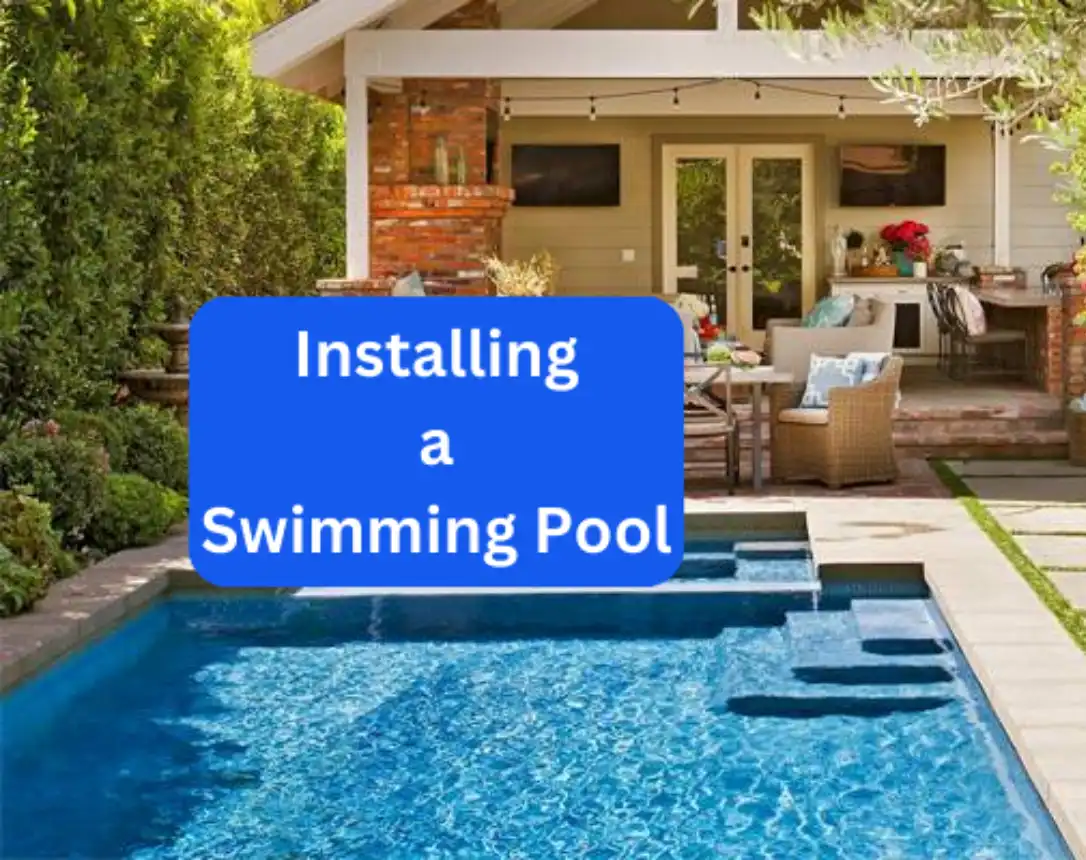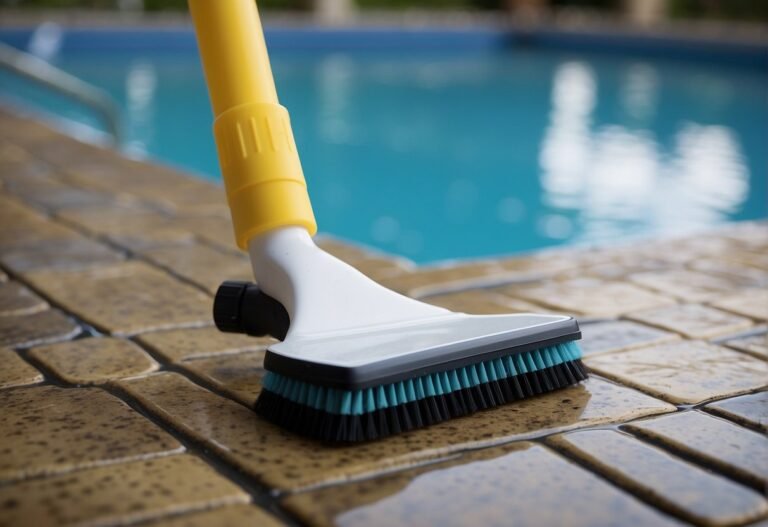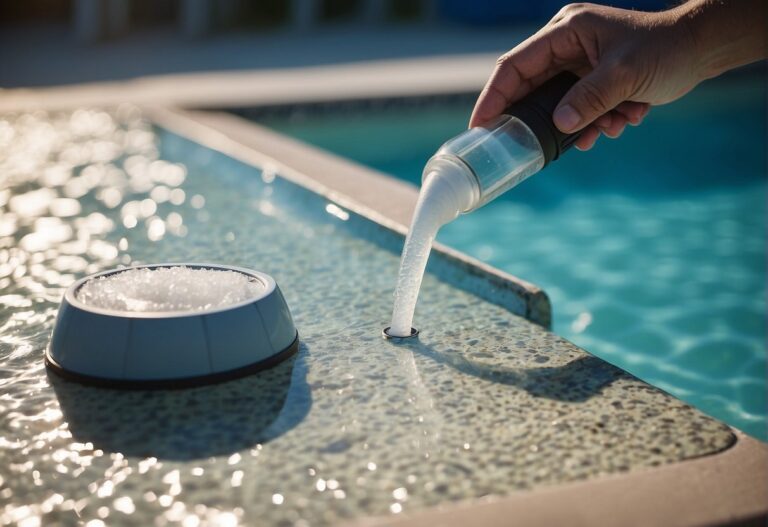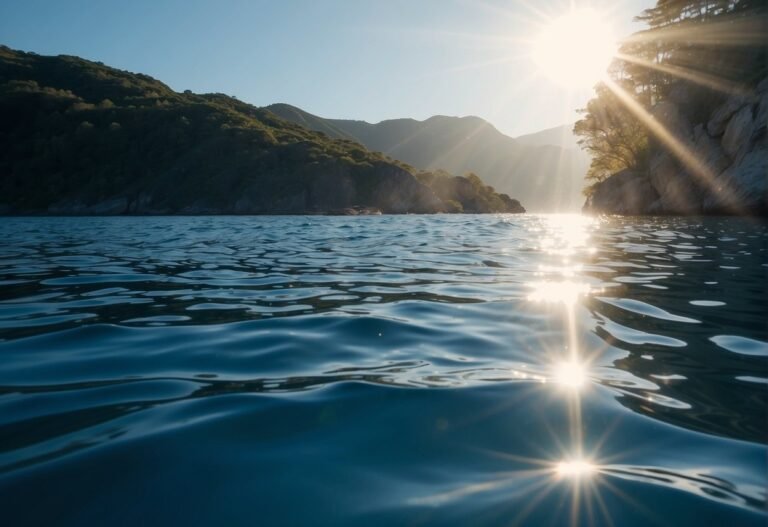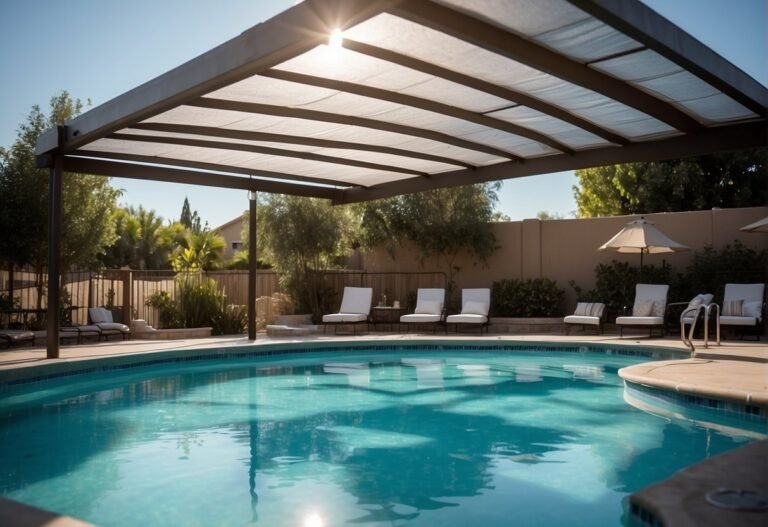Putting in a swimming pool is an exhilarating project that promises limitless fun, adds value to your home, and creates an area for both working out and unwinding. Before diving into this endeavor, it’s crucial to understand that thorough planning, financial preparation, and careful choices are required to guarantee that the final outcome meets our desires and fits our way of living.

From selecting the right location in our backyard to choosing between an in-ground or above-ground design, every step is vital. We must consider the size, shape, and style of the pool that would best suit our space and utilization goals. Additionally, understanding the construction process, material options, and potential maintenance requirements will help us make informed decisions for our new aquatic addition.
Engaging with trusted professionals who specialize in pool installation is key to a successful project. We’ll need to navigate permitting, design approvals, and adhere to local regulations to make sure our swimming pool meets all necessary standards. As we embark on this journey, we’re setting the stage for a transformative addition to our home that promises to bring joy for years to come.
Planning Your Pool Installation
Before diving into the pool installation process, we must focus on finding the perfect spot, selecting the ideal pool type for our space and lifestyle, navigating through the permit process, and managing our finances effectively.
Choosing the Right Location
When selecting the right location for our pool, we first look at our property layout and consider factors like sunlight exposure, wind patterns, and proximity to trees. It’s essential to choose a spot that maximizes sun exposure while minimizing the amount of leaves and debris that could fall into the pool. We’ll also ensure there’s sufficient space around the pool for lounging and walking.
- Sunlight exposure: Optimal for warmth and extended pool use.
- Wind patterns: Protection from prevailing winds can increase comfort.
- Proximity to trees: Minimize maintenance by avoiding direct tree cover.
- Walking space: Ensure enough room for safe and comfortable movement.
Selecting the Pool Type
Next, we decide on the type of pool that suits our needs and preferences. There are two main types: above-ground and in-ground pools. Above-ground pools tend to be more cost-effective and easier to install but may not last as long as in-ground pools. In-ground pools are a more significant investment but offer a wide variety of shapes, sizes, and customization options.

- Above-ground pools: More economical, less permanence.
- In-ground pools: Higher cost, more durable, and fully customizable.
Securing Building Permits
Before installation begins, we must secure the necessary building permits. This typically involves submitting detailed plans to our local authorities and making sure our project complies with all zoning regulations. Securing permits can be a complex process, but it’s crucial for legal and safety reasons.
- Submit detailed plans: Required for permit approval.
- Local zoning regulations: Compliance ensures legality and safety.
Budgeting and Costs
Finally, we need to set a realistic budget. The cost of installing a pool varies widely based on the pool type, materials, size, and additional features like decks or landscaping. We need to consider the upfront costs as well as ongoing maintenance expenses to ensure our pool is a worthwhile investment.
- Upfront costs: Include pool type, materials, installation.
- Ongoing expenses: Regular maintenance for pool longevity.

By meticulously planning our pool installation, we can create a delightful oasis that fits our lifestyle and offers lasting enjoyment.
Designing Your Dream Pool
When we embark on the journey of designing our dream pool, it’s key to align our vision with the practical elements that will make the pool both stunning and functional.
Custom Features and Landscaping
In crafting our perfect aquatic retreat, the fusion of custom features and landscaping plays a pivotal role. We think about integrating a waterfall for a natural and soothing ambiance, or perhaps adding a built-in spa for relaxation. Custom lighting can illuminate our pool, transforming it into a luminous wonder at night. When it comes to landscaping, we must consider the surrounding terrain and select flora that complements the pool and thrives in our climate. Strategic placement of trees and shrubs can provide privacy and wind protection.
| Features | Benefits |
|---|---|
| Waterfall | Natural ambiance and sound |
| Built-in spa | Relaxation and comfort |
| Custom lighting | Nighttime aesthetics and safety |
| Suitable greenery | Privacy and integration with land |
Pool Size and Depth Considerations
Our pool’s size and depth are dictated by the intended use, be it leisure, exercise, or entertainment. A shallow play area is fitting for families, while a deeper section caters to diving enthusiasts. We must also be mindful of the available space and ensure compliance with any zoning regulations. It is prudent to consider future uses of the surrounding yard space and adapt the pool dimensions accordingly.
- For Leisure: Ample lounging areas with a uniform, moderate depth.
- For Fitness: Lap lanes with clear markings and adequate length.
- For Diving: A specified deep end with appropriate safety clearances.
The Construction Process
The construction of a swimming pool involves several specific stages. We’ll coordinate a comprehensive process that safely transitions your yard into your personal oasis.
Excavation and Grading
Before anything, we excavate the area where your pool will go. This involves heavy machinery to dig to the correct depth and shape that you’ve chosen for your pool. Once excavation is complete, we grade the site to ensure proper drainage and a level foundation for the pool structure.
Pool Material and Structure
Your choice of pool material—be it vinyl, fiberglass, or concrete—dictates the next steps. For vinyl and fiberglass, we’ll position a preformed shell or liner in the excavated space. If you’ve chosen concrete, we’ll build a framework using steel rebar before spraying or pouring concrete to form the sturdy shell of your pool.

Plumbing and Electrical Work
We install the necessary plumbing to make sure your pool water circulates properly, filtering out debris and contaminants. Simultaneously, electrical work is carried out to set up lights, pumps, and heating systems, adhering strictly to safety standards.

Applying Finishes and Surfaces
Lastly, we apply the finishes to the pool’s surface. This includes tiling, plastering, or applying a pebble finish depending on the type of surface you’ve selected. These finishes not only add aesthetic value to your pool but also seal and protect the underlying structure.
Important Safety Measures
When we talk about swimming pools, our safety is paramount. From installing protective barriers to ensuring proper chemical balance, let’s take a look at the crucial steps we must take to create a safe swimming environment.
Installing Pool Fencing and Covers
Pool Fencing: We need to install a fence at least 4 feet high around our pool. The fence should not have openings larger than 4 inches wide, so small children can’t squeeze through. Gates must be self-closing and self-latching, with latches out of children’s reach.
- Self-Closing Gates: Ensure latches are above 54 inches.
- Spacing: Keep vertical slits under 4 inches apart.
- Height: Maintain a minimum fence height of 48 inches.
Pool Covers: A sturdy pool cover is essential for safety when the pool is not in use. Look for covers that can support the weight of at least two adults for added safety.
- Automatic Covers: These are convenient and provide quick protection.
- Manual Covers: They require more effort but are equally effective when properly placed.
Ensuring Electrical Safety
Electrical Installations: We’ll have to hire a licensed electrician who specializes in pool installations to handle all electrical work. This ensures that all lighting, pumps, and heating systems are installed according to code and have ground-fault circuit interrupters (GFCIs) for protection.
- GFCIs: These devices are critical in preventing electrocution by instantly shutting off power if an electrical fault is detected.
- Lighting and Wiring: Only use equipment and wiring designed for pool use.
Maintaining Water Quality
Lastly, maintaining good water quality is a key safety measure to prevent infections and skin irritations.
pH and Chlorine Levels: We need to maintain the pH level between 7.2 and 7.8 for maximum chlorine efficiency and swimmer comfort. Regular testing and adjusting of these levels will keep the water clean and safe.
- pH Test Kits: Regularly check water balance using reliable testing kits.
- Chlorine: Chlorine levels should be between 1.0 and 3.0 ppm for effective sanitization.
Chemical Handling: When we handle pool chemicals, we must always follow the manufacturer’s instructions, store them in a safe area, and never mix different chemicals together.
- Storage: Chemicals should be stored in a cool, dry place away from direct sunlight.
- Usage: Use chemicals per the guidelines to avoid over or under-treatment of the water.
Pool Maintenance and Care
Maintaining a pool requires regular attention and care to ensure it remains a safe, clean, and enjoyable place. We’re going to cover the essentials of pool maintenance, from cleaning to chemical management.
Regular Cleaning and Repairs
Every week, we should brush our pool’s walls and floor to remove any debris and prevent algae buildup. The pool’s skimmer baskets must be emptied and checked for any damage. Vacuuming is also essential and should be done weekly to keep the water pristine.
A key component of maintenance is our pool’s filter system. We must clean or replace filter cartridges every couple of months, or as often as the manufacturer recommends. This ensures our pool water remains clear and sanitary.
If we notice any cracks or tears in our pool lining, prompt repairs are crucial to prevent more significant issues. Pool service professionals can help us with more complex issues, like repairing our pump or fixing leaks.
Managing Pool Chemicals
Balancing our pool’s chemistry is vital for the health and longevity of the pool. Here’s a basic chemical maintenance schedule we can follow:
| Frequency | Task |
|---|---|
| Daily | Check and adjust chlorine levels to ensure they remain between 1-3 ppm. |
| Twice a week | Measure and maintain the pH level, ideally between 7.2 and 7.6. |
| Weekly | Test and adjust the alkalinity (80-120 ppm) and hardness (200-400 ppm). |
We should shock our pool regularly, typically once a week, to keep the water clear and free of bacteria and algae. If our pool is heavily used, we might need to shock it more frequently. When adding chemicals, we follow the manufacturer’s instructions carefully to ensure safety and effectiveness.
Handling pool chemicals requires caution, so we always wear protective gear such as gloves and goggles, and never mix different chemicals. Store all pool chemicals in a cool, dry place, away from sunlight and out of reach of children and pets.
By following these guidelines, we can enjoy a beautiful and functional swimming environment with minimal hassle. Remember, consistent care is the secret to long-lasting pool health and enjoyment.
What are the zoning and building code requirements for installing a swimming pool?
Obtain the locally required building regulations for installing a swimming pool so that the local regulations for electrics, fencing and barriers are complied with.
Do I need a permit to install a swimming pool, and if so, how do I obtain one?
This depends on your local building regulations. Please contact your local authority for more information.
What are the maintenance and upkeep requirements for a swimming pool?
Pools require regular maintenance like brushing, vacuuming, and chemical treatment to keep water clean and balanced. Check chemical levels like pH, chlorine weekly. Drain and refill the pool annually. Inspect and service pumps, filters as needed.
If you liked this blog post about installing a swimming pool, don’t forget to leave us a comment down below to tell us about your experience with it.

